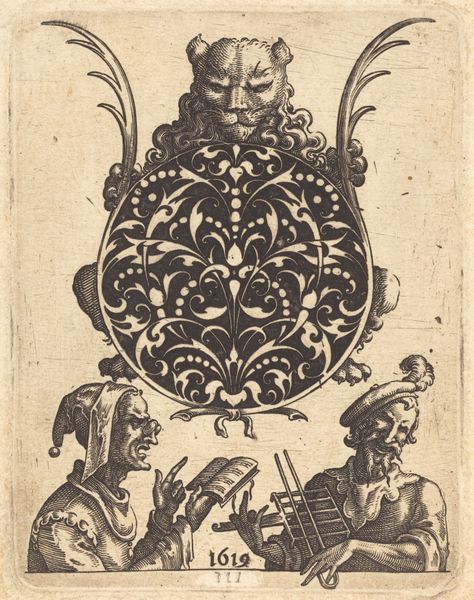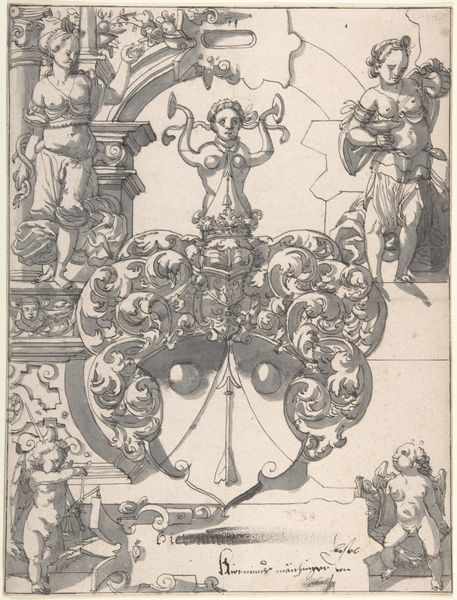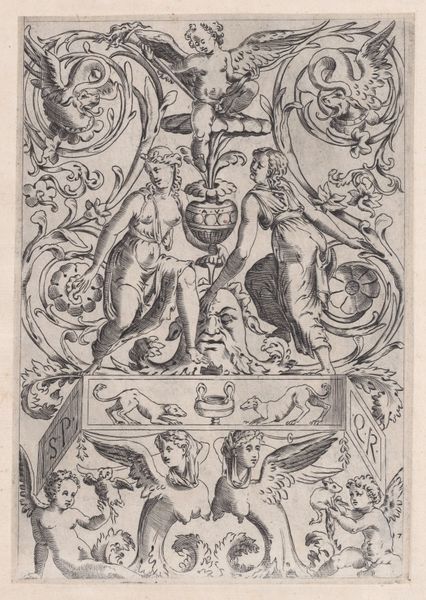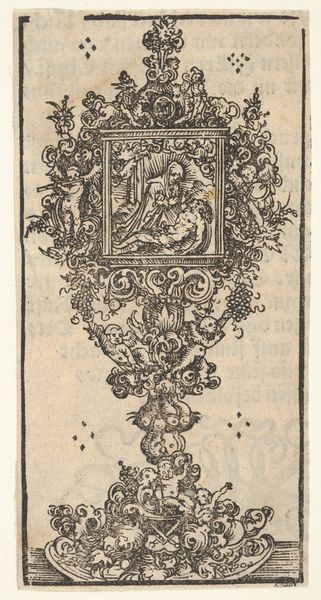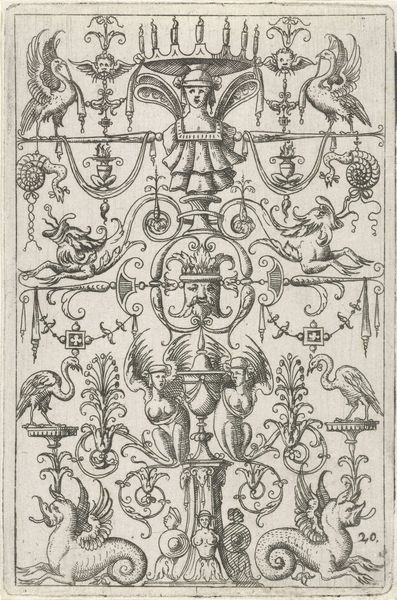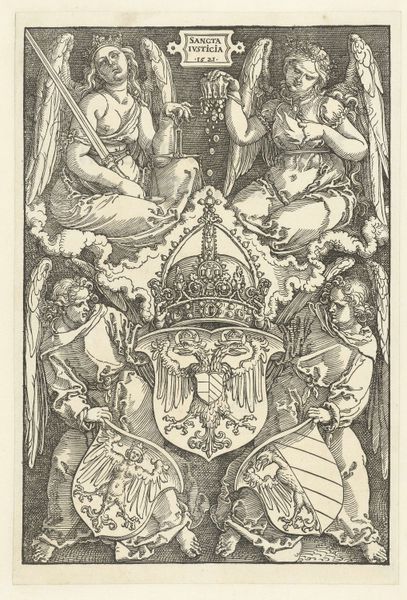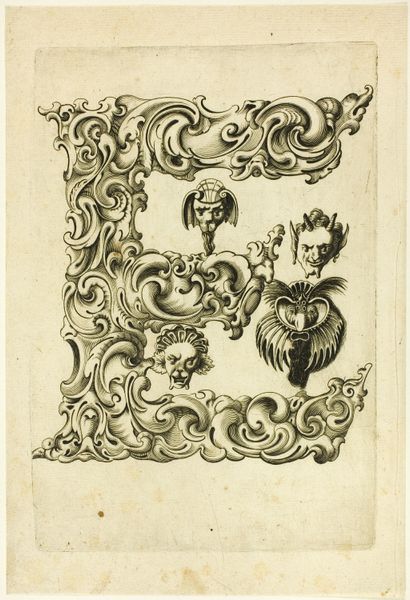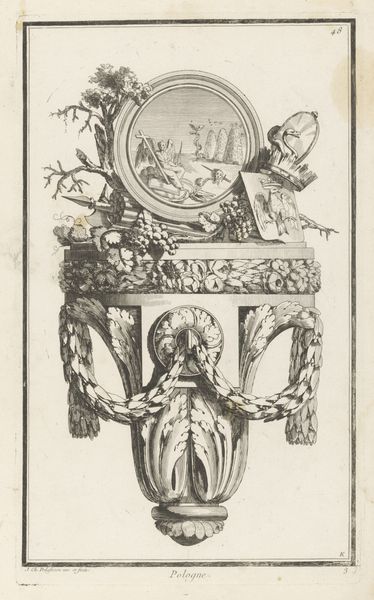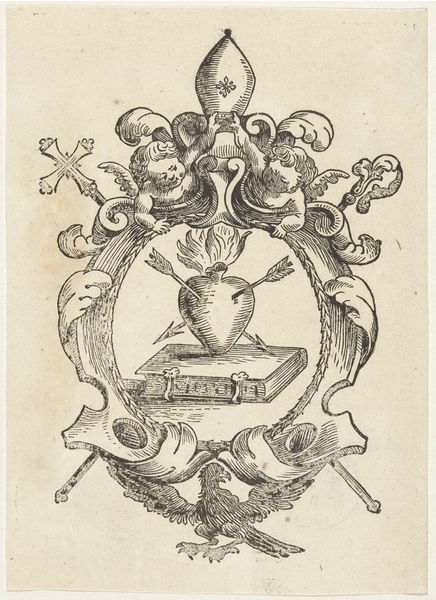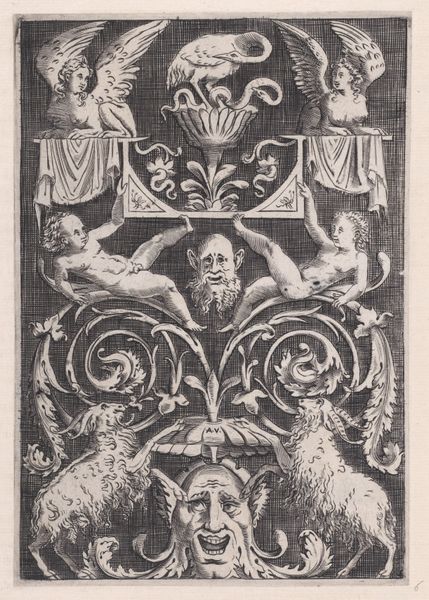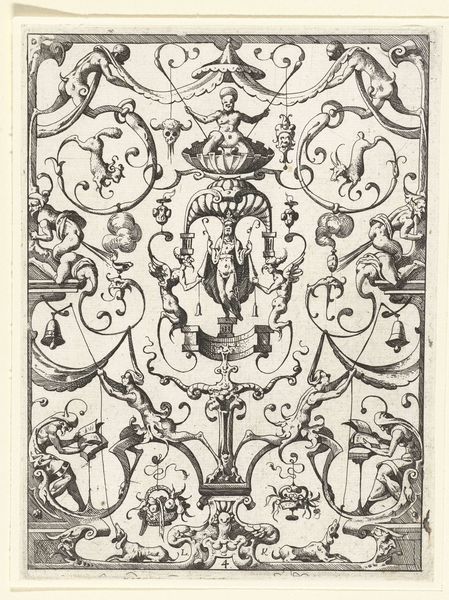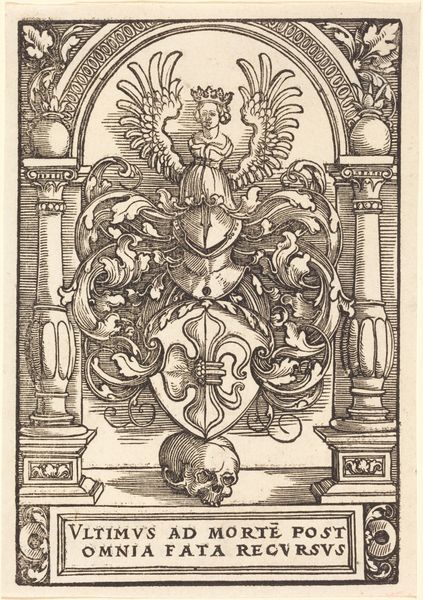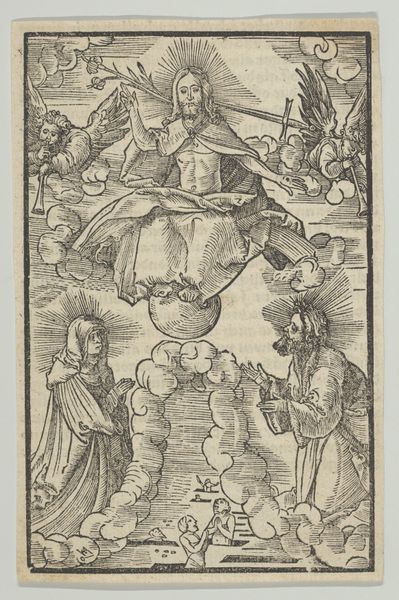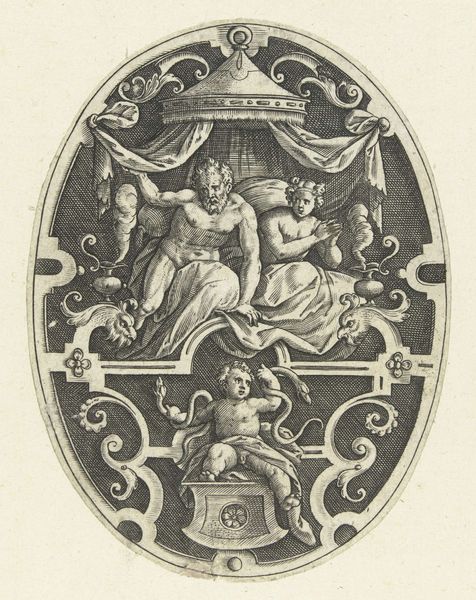
print, engraving
#
medieval
# print
#
pen sketch
#
figuration
#
11_renaissance
#
line
#
pen work
#
engraving
Dimensions: height 105 mm, width 78 mm
Copyright: Rijks Museum: Open Domain
Editor: This print, "Edelsmidboeket in medaillon" by Jacob von der Heyden, was made after 1619. It's an engraving featuring some musical figures under an elaborate crest. I'm really struck by the almost caricatured depiction of the musicians; there's a clear sense of humor, perhaps even satire. What do you make of this unusual combination of elements? Curator: It’s important to consider the printmaking tradition during this period. Prints often served a didactic or propagandistic function, reaching a broader audience than paintings. The seemingly odd juxtaposition of the ornate medallion, which signifies status and wealth, and the musicians might be a commentary on the relationship between artistic patronage and artistic expression, don't you think? Editor: That's a good point. The musical figures do look rather… lowbrow, compared to the aristocratic symbolism above. Was this meant to critique the elite's taste or perhaps comment on the artist's own position in that society? Curator: Exactly. The “lowbrow” musicians in conjunction with an image used by goldsmiths raises some intriguing questions about the social function of art. Is it intended as accessible public art? Or does its humor alienate some viewers and solidify others? How do prints serve various social purposes during the Renaissance? Editor: That's really interesting. I hadn’t thought about the public role of prints in shaping social hierarchies back then. So, beyond the obvious aesthetics, this piece reflects a kind of social performance. Curator: Precisely. By understanding the socio-political conditions in which this work was produced and circulated, we begin to understand not just the aesthetics, but its very *purpose* as a social object. What are your closing thoughts? Editor: I'm now considering how the choices in printing contributed to this work's political and social meaning. It has changed my perspective completely! Curator: Mine too. Considering the image's impact through that historical lens makes me realize there's always more beneath the surface.
Comments
No comments
Be the first to comment and join the conversation on the ultimate creative platform.
